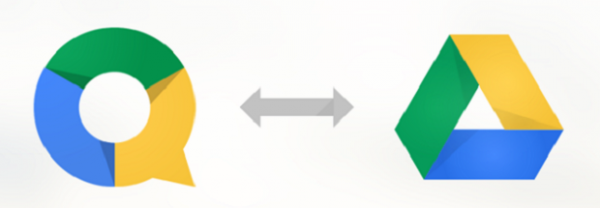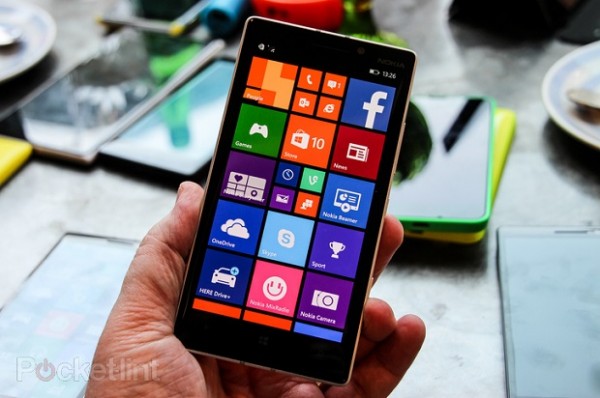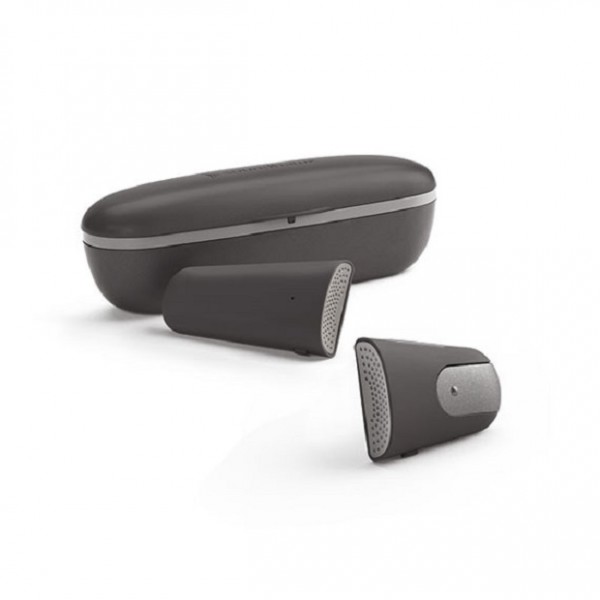Walyou |  |
- Google Docs to Have Quickoffice Functionality while App Is Terminated
- Google to sell their first humanoid robot
- Microsoft Wants to Take the Mobile World by Surprise by Adding Folders to WP8.1
- BitCoin & other digital currencies are legal again in California
- Soundhawk App-Enabled Wearable Customizes Listening Experiences
| Google Docs to Have Quickoffice Functionality while App Is Terminated Posted: 30 Jun 2014 09:15 AM PDT  The search giant decided to discontinue the Quickoffice app for Android, since most of its functionality was integrated in both the online and the mobile versions of Google Docs. As long as none of the functionality is lost, it definitely sounds like great news that Quickoffice is integrated in Google Drive. Quickoffice was acquired by Google in June 2012, and ever since, it represented the search giant’s ultimate weapon in the war against Microsoft and its Office suite. Best of all, Quickoffice was used both by home and business users, and was even included in Google Apps for Business, a cloud-based suite that costs $50 per user per year. More than a year after the acquisition, in September 2013, Google decided to offer the app for free (something that the company has done with other apps, as well), and in November, the company turned Quickoffice into a staple for KitKat. The company mentioned in an Android Apps blog post last week that “With the integration of Quickoffice into the Google Docs, Sheets and Slides apps, the Quickoffice app will be unpublished from Google Play and the App Store in the coming weeks. Existing users with the app can continue to use it, but no features will be added and new users will not be able to install the app.” At press time, the Quickoffice app was still up both on Google’s Play Store and on Apple’s AppStore, but I’d take the developer’s word for granted, when it says that it’ll be unpublished soon. Google Docs for Android was updated on June 25 to reflect the new functionality, but the iOS version has yet to receive the new capabilities. Also, Chrome OS users had access to the new functions right away, while Windows and OS X users of Google’s browser will have to download and install an 11.5MB Chrome extension. Probably the best feature brought by the update is the ability to edit Word, Excel and PowerPoint files without having to convert them in Google’s own formats first. That’s a major improvement that will surely save users some time. For Google it was definitely worth buying Quickoffice and integrating that team into its Google Apps group, especially since now the functionality has been added to more than just the Android apps. Be social! Follow Walyou on Facebook and Twitter, and read more related stories about the facelift of Google Docs and Sites and the Google Docs add-ons. |
| Google to sell their first humanoid robot Posted: 30 Jun 2014 07:00 AM PDT  Internet giant Google is more than the search engine: they’re also behind a series of robots that might just change the world… or some business. Google’s robot can run, climb and even drive a car, and has completed DARPA Robotics Challenge too. Commercial enterprises are now able to buy the HRP-2 designed by Schaft, a subsidiary from Google, and employ it for several purposes. Google had been working as of now with driverless cars, that didn’t have steering wheels or pedals, but this is their first foray into humanoid robots, and from the data gathered from their DARPA tests, it’s a total success. So, how long will it be before we can have one of these in our homes? Source: RT Be social! Follow Walyou on Facebook and Twitter, and read more related stories at Tell Me Dave Robot Learns Through Conversations with Humans and Pepper, the Incredibly Communicative Japanese Humanoid Robot. |
| Microsoft Wants to Take the Mobile World by Surprise by Adding Folders to WP8.1 Posted: 30 Jun 2014 05:30 AM PDT  The Redmond giant might have been asleep in the past couple of years, as it missed the introduction of folders in both iOS and Android. Now, it seems this will be one of the major selling points of Windows Phone 8.1. The tech world is definitely not impressed with the addition of folders in Windows Phone 8.1, since this feature has been around since 2012. While most people would yawn at this news, others think that folders could help Android and iOS users make the switch. I don’t know why on Earth would an Android user make the transition to a mobile OS with such a poor app ecosystem as Windows Phone. Ebin Babu (in case that’s a real name and not just a nickname in an unknown language), better known as @ebin_5 on Twitter, stumbled upon a page that detailed how to create folders on the Start screen. Microsoft even provided the steps necessary for achieving this:
In the meantime, Microsoft took down that page, but Ebin pointed out that the page is still available in the Google cache. While the exact launch date of Windows Phone 8.1 is currently unknown, Microsoft India was kind enough to tell someone who had asked about it that the update should become official in the first two weeks of July. We can only hope that the addition of folders is not the only news that Redmond has in store for us, as far as Windows Phone 8.1 is concerned. Microsoft could make some waves by announcing the unified apps that run on all of its operating systems, or some updates to its own cloud and devices. While still handy, the folders will certainly not be a differentiating feature, and people would still turn their eyes to an iOS or Android device before deciding to spend their money on a Windows Phone. It remains to be seen how the next Windows Phone will look like when it’s launched. Be social! Follow Walyou on Facebook and Twitter, and read more related stories about Microsoft rumoredly bringing Android apps to Windows Phone and Microsoft’s confirmation of Windows Phone 8.1 and the Cortana personal assistant. |
| BitCoin & other digital currencies are legal again in California Posted: 30 Jun 2014 05:00 AM PDT  Investors of the world, rejoice, for your cryptocurrency is worth something again in the state of California. Jerry Brown, the California governor, has signed a bill allowing bitcoin and several other cryptocurrencies to be used inside the state, reversing the prohibition against them that was effective until last Saturday. The AB 129 bill repeals a provision in the state ensuring that no currency other than US dollars are used for commerce, but as many claim, “this is an outdated law”, and “In an era of evolving payment methods, from Amazon Coins to Starbucks Stars, it is impractical to ignore the growing use of cash alternatives.” As of last saturday, the California Department of Financial Institutions, was accusing the Bitcoin foundation of “engaging in the business of money transmission without a license or proper authorization”, but that is now a thing of the past: bitcoin is back in the game. Via CNET Be social! Follow Walyou on Facebook and Twitter, and read more related stories at BitCoin operated Arcade Mixes Future And Past Together and Innovative ATM Accepts Fiat Currency, Returns Bitcoins. |
| Soundhawk App-Enabled Wearable Customizes Listening Experiences Posted: 29 Jun 2014 01:57 PM PDT  What may look at first as a gadget for the hearing-impaired is actually a device that helps people filter unwanted noises in order to focus only on what they want to hear. Enhancing the signal to noise ratio has become a very sought-after thing nowadays. There are many unwanted sounds that surround us, from car traffic and loud dogs to noisy neighbors and annoying muzak. Soundhawk developed a little gadget that could help us get rid of the unwanted bangs and booms, so all we’re left with is specifically the sound we’re looking for. In an interview with Mashable, Soundhawk CEO Michael Kisch spoke about the target audience for this device: “It’s typically someone in their late 30′s to mid-60′s… what’s exacerbating the problem for them is they are experiencing really noisy environments throughout the day. As the environments get nosier our biology, our hearing, isn’t able to keep up with it.” The entire kit includes only three pieces: the Scoop, a wireless microphone and a charging case. The Scoop’s ability to filter the noises is uncanny, as Kisch explained: “The sensation is you can get 35 feet away from someone, have 100 decibels of noise but it will feel like someone sitting next to you whispering in your ear.” Best of all, the kit comes with an app that enables people to pinpoint the direction of the sound that should be picked up by the Scoop. The app even comes with four presets that refer to possible environments where the Scoop could prove useful. Bass level, pitch and frequency can be furthermore adjusted, in order to accommodate the preferences of the wearer. The customization degree of this device is really incredible, and it makes me wonder if some gadget could be invented for seeing only the things that we want to see. Or maybe in the Scoop’s case we could filter out the voice of the annoying people so that when they talk all we see is their mouth moving with absolutely no sounds coming out. The device is currently available for pre-order on Soundhawk‘s website, and getting it will cost you $279. The recommended retail price is of $299, so if you think the Scoop is what you need to hear what interests you, you should probably pre-order it now. The following video should give you an idea about how the Scoop and the wireless microphone work in real life:
Be social! Follow Walyou on Facebook and Twitter, and read more related stories about the smartphone controlled Wi-Fi enabled LED bulbs and the Google Gesture armband that gives the speech-impaired a voice. |
| You are subscribed to email updates from Walyou To stop receiving these emails, you may unsubscribe now. | Email delivery powered by Google |
| Google Inc., 20 West Kinzie, Chicago IL USA 60610 | |